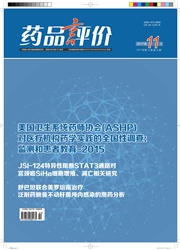

 中文摘要:
中文摘要:
目的:探索磷霉素抗生素锁技术(antibiotic lock technology,ALT)在治疗导管相关感染中的作用及给药方式对临床疗效的影响。方法:选取43例患者作为研究对象,均为2012年1月至2014年4月在九江学院临床医学院附属医院治疗的导管相关感染的血透患者,将其随机分为A(n=14)、B(n=7)、C(n=8)、D(n=14)四组,观察各组治疗效果。A组患者单药每日2次,B组患者单药每日1次,C组患者联合用药(磷霉素+单药)每日各1次,D组患者为未封管处理。结果:①导管感染的前四位细菌共41例,占95.3%,依次为金黄色葡萄球菌、表皮葡萄球菌、除表皮的凝固酶阴性葡萄球菌、大肠埃希菌,磷霉素的敏感率均较高,分别为82.3%、71.4%、73.3%、96.5%;②不同的给药方式影响治疗效果。联合给药组血培养转阴时间最短(P〈0.05);体温下降速度最快(P〈0.05);但各组间白细胞总数及中性比的下降速度无差异(P〉0.05)。结论:磷霉素可作为是早期用药的选择,磷霉素锁技术中的联合用药能提高治疗效果,血培养转阴时间及体温下降速度可作为疗效观察指标。
 英文摘要:
英文摘要:
Objective: To explore the effect of the antibiotic lock technique (ALT) in the treatment of catheter related infection and its effect on the clinical efficacy.Methods: 43 catheter-related infections patients were selected as the research object, from January 2012 to April 2014 in Jiujiang University Hospital for the treatment of hemodialysis, and randomly divided into A (n=14), B (n=7), C (n=8), D (n=14) four groups, the therapeutic effects were observed. Patients in group A were treated with single medicine 2 times a day, 1 times a day in group B, patients in group C were treated with combination therapy (P+1), D group was not sealed.Results: The results of catheter infection four bacteria were 41 cases, accounting for 95.3%, followed by Staphylococcus aureus, Staphylococcus epidermidis, in addition to the epidermis of coagulase negative staphylococcus, Escherichia coli, fosfomycin sensitive rate were higher, respectively 82.3%, 71.4%, 73.3%, 96.5%. Blood culture conversion in combination group is the shortest (P〈0.05); temperature decreased the fastest in combination group among all groups (P〈0.05); but the white blood cell count and the ratio of the neutral rate of decline had no difference (P〉0.05).Conclusion: Fosfomycin as early drugs of choice, in combination lock technology improve the therapeutic effect. Blood culture negative time and temperature drop speed can be used as the efficacy index.
 同期刊论文项目
同期刊论文项目
 同项目期刊论文
同项目期刊论文
 期刊信息
期刊信息
